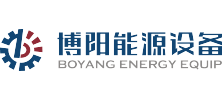Process for producing solar cell assembly line
2017/8/4 19:46:38Process:
How to ensure the efficient components and high service life:
1, high conversion efficiency and high quality battery;
2, high quality raw materials, such as packaging agent crosslinking degree of EVA, high bond strength of high (neutral silicone resin), high transmission rate and high strength tempered glass;
3, the reasonable packaging process;
4 employees, strict work style;
Because the solar cell belongs to high-tech products, some of the details in the production process, some obscure problems such as should wear gloves while brushing should be uniform, not wearing reagents and scribbled are finished enemy influence the quality of products, so in addition to making reasonable production process, serious and rigorous staff is very important.
? solar cell assembly process:
Process Description: here only a brief description of the role of technology, to give you a sensible understanding.
1, the battery test: due to the randomness of the battery production conditions, the production out of battery performance is not the same, so it will be for the effective performance of identical or similar battery together, it should be classified according to their performance parameters; the battery test that is by testing the battery output parameters (current and voltage) of the size of the the classification of the. In order to improve the utilization of the battery, the quality of qualified battery components.
2. Front welding: it is the main grid line that connects the belt to the front of the battery (negative electrode), and the copper strip is the tinned copper strip. The welding machine we use can weld the weld belt in the form of multi spot welding on the main grid line. Welding heat source for an infrared lamp (using infrared thermal effect). The length of the welding band is about 2 times of the length of the battery. The extra weld is connected to the back electrode of the battery plate at the back of the solder joint.
? 3, the back series: back welding is 36 battery connected together to form a component string, we use the manual process, cell positioning mainly rely on a film with plate, there are 36 cell groove, the groove size and the size of the corresponding cell the position of the trough, has been designed, components of different specifications using different templates, positive electrode operators use the electric iron and solder wire "in front of the battery" (negative) to "behind the back electrode welding battery" (positive), which in turn will be 36 pieces of string together and in the positive and negative components series a welding wire.
5 component lamination: a good battery will be laid into the laminating machine, will be through the vacuum component of the air out, and then heated to melt the EVA batteries, glass and back bonding together; finally cooling out components. Laminating process is a key step in component production, and lamination temperature and lamination time are determined according to the nature of EVA. When we use fast curing EVA, the lamination cycle time is about 25 minutes. The curing temperature is 150 DEG C.
6. Trimming: when laminating, the EVA melts and is stretched outward by pressure to form a rough edge, so it should be cut off after laminating.
7, framing: similar to the glass mounted to a frame; to the glass componentmounted aluminum frame to increase the intensity of the component, further sealing the battery components, prolonging the service life of the battery. The gap between the frame and the glass component is filled with silicone resin. Each frame is connected by an angle key.
8. Welding junction box: welding a box at the back of the component to facilitate the connection between the battery and other equipment or batteries.
9, test: high-pressure test refers to a certain voltage is applied in the assembly of the border and the electrode lead between the test component of the pressure resistance and dielectric strength to ensure that components in harsh natural conditions (lightning) will not be damaged under the.
: 10, component testing: the purpose of the test is to calibrate the output power of the battery, test its output characteristics, and determine the quality level of the components.
? 1. calculate the load 24h consumption capacity P.
P=H/V
? V - load rated power supply

